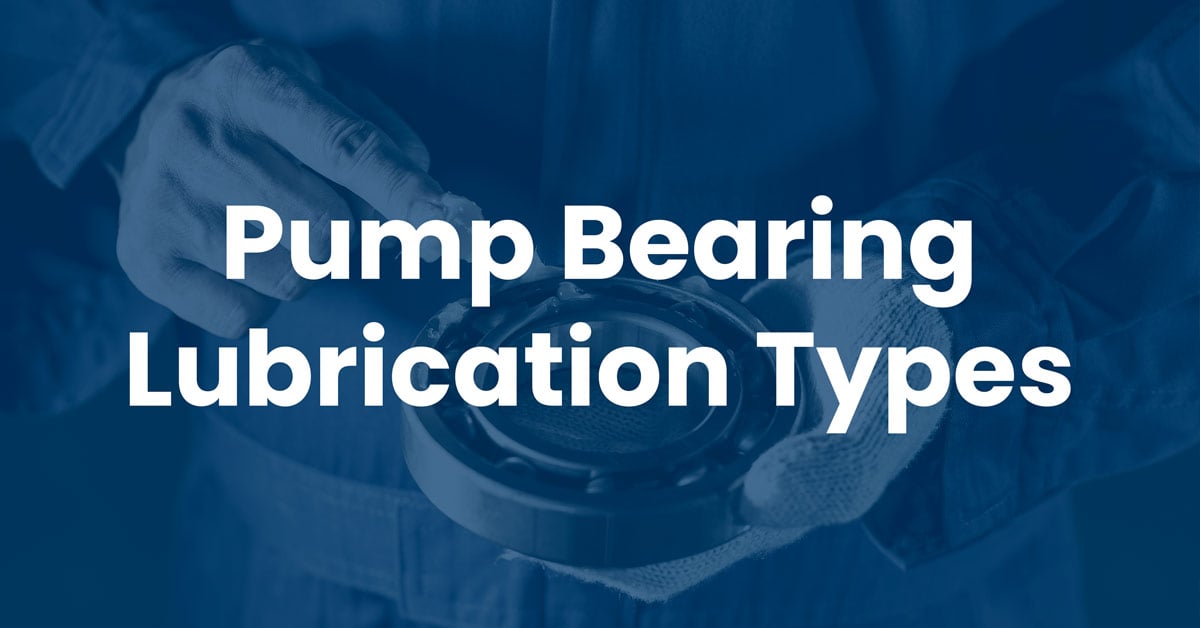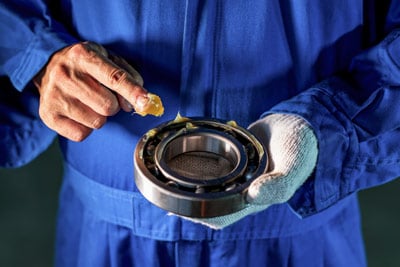Pump Bearing Lubrication Types Explained

In industrial engineering, friction can be helpful in some areas while it can severely affect performance in others. In pumps, friction serves the latter purpose. When two surfaces slide across each other, there acts a resistive force called friction. This resistive force slows down the movement between the parts and expends energy in the form of heat or sound.
Therefore, pump design engineers always ensure that their design involves elements that keep friction to a minimum. Lubrication is one of the most effective ways to reduce friction between sliding parts. Automotive engines are a prime example of how lubrication plays a critical role in maintaining engine performance. Similarly, pumps need lubrication between moving parts, especially bearings, to ensure longevity and consistent performance efficiency.
The Importance of Lubrication in Pump Bearings
In a pump, bearings are used to support the load of the rotational parts. These bearings are designed to support both axial and radial loads. Therefore, the pump bearings must be adequately lubricated to facilitate smooth movement.
When a bearing is not lubricated, it fails to offset the friction, causing the pump to lose performance. After a continuous use without lubrication, the bearings themselves get affected by friction and ultimately fail.
Types of Bearing Lubrication
Pump bearings use several types of lubricants. Let’s review some of the most common ones.
Grease

Grease is the most popular bearing lubrication method found in most pump applications. The first and foremost advantage of using grease is its simplicity. Applying a layer of grease onto the bearing is relatively easy and doesn’t leak out. In addition, it protects the inner elements from contamination and doesn’t require frequent monitoring.
However, grease can be highly viscous and causes the internal temperature to build up. Hence, it is not preferred in pumps that rotate at high speed.
Oil
While grease is easy to apply, clearing it out for maintenance is a hassle. On the other hand, oil lubricants are easier to clean. Moreover, newer application methods also make it easier to change the oil.
Oil lubricants offer less drag to motion and are excellent for high-speed, high-temperature applications. The oil lubricants are also great at efficiently taking away the internally generated heat from the bearing core. There are mainly two oil lubricants: mineral oil-based lubricant with additives and fully synthetic oil.
When it comes to oil, there are also different lubrication methods available. These methods describe how oil is supplied into the bearings. Some examples are oil bath, oil jet, oil drop, and oil mist.
Oil spray or oil mist
In this method, the oil is sprayed as a mist on the bearing. The advantage is that the amount of spray on the bearing can be controlled and adjusted based on the pump performance. Also, the oil being recirculated goes through a filter to prevent contaminants from entering the bearing. Since the oil is sprayed on the bearing, it does a great job of removing the internal heat from the bearing.
Need More Help on Pump Bearing Lubrication?
Your pump’s performance and longevity depend primarily on how well you maintain it. Following maintenance schedules and keeping a check on your pump’s lubrication system are a few of the critical steps to keep your pump operating at peak efficiency.
At Hayes Pump, we offer pump maintenance programs carried out by fully trained personnel to help keep your pumps in the best shape with minimal downtime.




